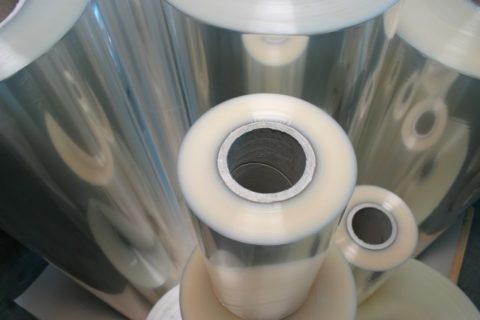
Polyester Film UK: The Versatile Solution for Demanding Applications
At Diamond Coatings, we enhance the capabilities of polyester film by applying our specialised ITO coatings, creating a material that’s truly fit for the future.

Does A Resistive Touch Screen Use ITO Coating?
The world we live in today pretty much requires the use of touchscreens on a near daily basis. Even if you don’t own a smartphone or tablet, the chances of you not using a touchscreen regularly are slim.
If you are one of the rare few mentioned above, think about the last time you used an ATM or a self-service till at the supermarket. These are just two common examples of touchscreen usage.
What is a resistive touch screen?
It’s important to differentiate between the 2 most common forms of touchscreens: Resistive and Capacitive. Capacitive screens are now the most common forms of touchscreens used in smartphones. They work by utilising a glass screen that is coated in Indium Tin Oxide – the human touch changes the level of charge at point of touch, meaning the device can recognise and register that location. Capacitive touchscreens became the primary screen for smartphones from around 2011, overtaking resistive screens, in this area.
A resistive screen works differently. The screen consists of 2 layers, either glass or plastic. When pressure is exerted on the screen as a downward force – a touch – the device can register exactly where.
How? The resistive touchscreen uses ITO coatings to identify the location. There is typically a coating of Indium Tin Oxide on one or both inner sides of each layer which carries an electric charge. The change in pressure at that specific point of touch alters the current below the screen, within the 2 layers.
Although capacitive screens are more popular for use in smartphones, resistive screens have many advantages to a capacitive version.
The most important difference is they are a lot tougher and therefore used in more public facing environments and more demanding situations, such as the ATMs and supermarket self-serve tills mentioned above, and also heavily used in the medical and military industries.
Resistive screens are also waterproof! Or at least can be, providing the rest of the device is watertight!
Capacitive screens may have the smartphone market share, and this can be attributed to their multi-touch and gesture capabilities, yet resistive screens will always have a firm usage applied to various instruments and devices, based on the environments and usage situations.
Diamond Coatings Resistive Touchscreens
Diamond Coatings can provide both capacitive and resistive touch screens, from development to production volumes, and in a range of sizes. The screens can be provided with anti-glare and other finishes as required, and can be applied to plastic or glass.
Get in touch with us
If you would like to know more about our touchscreen manufacturing services, or have a query regarding your specific requirements, please do get in touch with us. A member of our technical team will respond as soon as possible.

At Diamond Coatings, we enhance the capabilities of polyester film by applying our specialised ITO coatings, creating a material that’s truly fit for the future.

At Diamond Coatings, we understand the critical role that projection booth glass plays in delivering a truly immersive cinematic experience

We wanted to highlight the exceptional value now available on our VISIN discounted PPE Face Shields, offering you industry-leading protection and clarity

Have you ever wondered how to achieve crystal-clear visuals and reduce annoying reflections on your displays, windows, or touch panels?
If you are interested in any of our products or services, please use the contact form or give us a call, we will be happy to discuss how we may be able to help you.